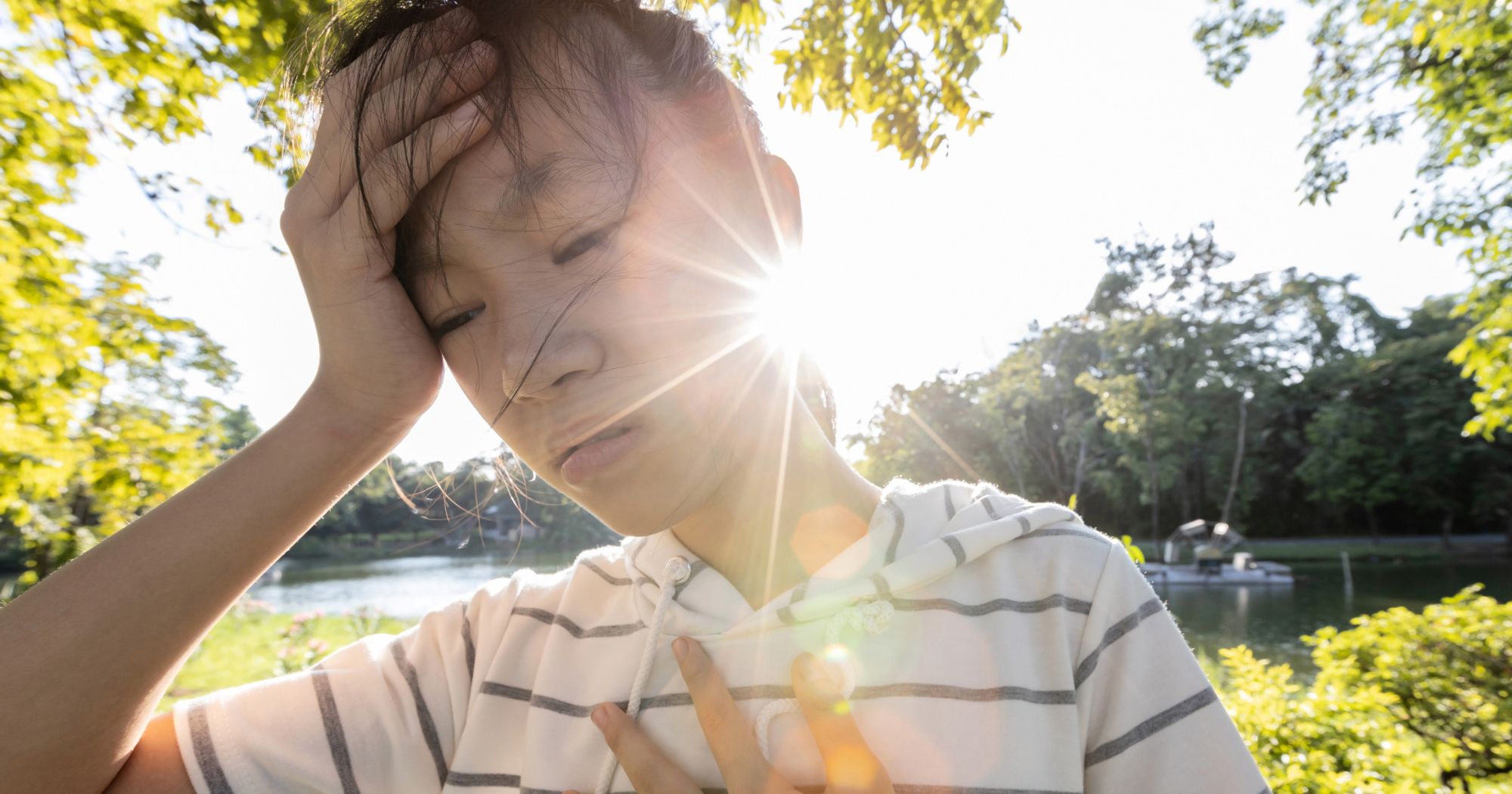The ultraviolet (UV) index in Singapore hit "extreme" levels again on Saturday, Mar. 30.
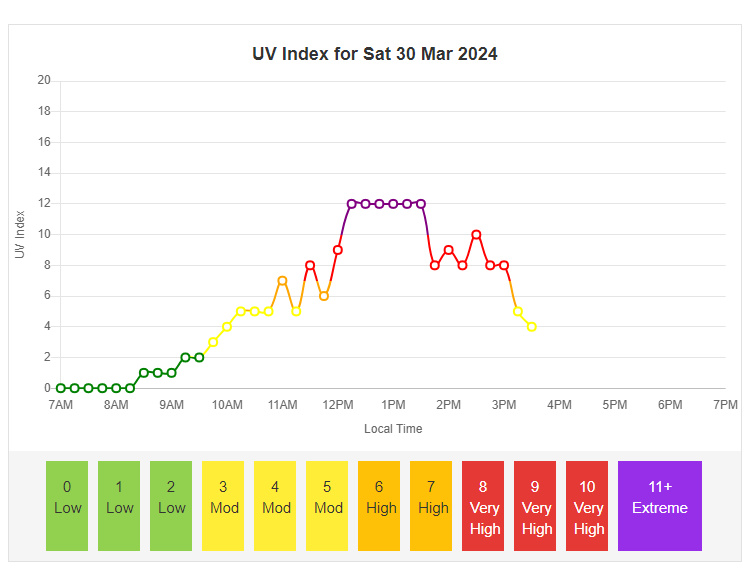
According to data from Singapore's Meteorological Service, the UV index started rising sometime after 8am.
It reached "moderate" levels at 9:45am and fluctuated quickly through "high" and "very high" levels until noon.
By 12:15pm, the UV index had hit "extreme" levels, staying at "12" for 75 minutes until 1:30pm.
Anything from "11" and upwards on the UV index indicates "extreme" levels of solar UV radiation.
For context, the daily maximum UV index in Singapore typically ranges from "6" to "9".
Second occurrence in four days
According to 8World, this is the second occurrence in four days.
The first instance happened on Wednesday Mar. 27, when the index hovered between "11" and "12" from 12:15pm to 2pm.
The island's UV index is measured at the Changi Meteorological Station.
Excessive exposure can be harmful
Some UV exposure is important for health functions such as Vitamin D production in the body, and treating diseases like jaundice, psoriasis, and rickets.
However, excessive exposure to solar UV radiation can result in harmful effects to the skin and eyes.
If you need to be out under the sun when the UV index is at its highest, typically between 11am and 3pm, you are advised to take these protective measures:
- Use a sunscreen of at least 30 SPF and reapply every two hours
- Shade yourself with an umbrella
- Wear a broad-brimmed hat
- Shield your eyes with sunglasses
Two locations recorded "high" levels of heat stress
Excessive heat that stresses our bodies isn't caused by UV radiation alone.
Other factors include air temperature, humidity, and wind.
The Wet-Bulb Globe Temperature (WBGT) combines all these factors to give a more accurate picture of the amount of heat stress we experience outside.
On Mar. 30, two locations in Singapore recorded "high" heat stress levels at different points in time.
The first was Choa Chu Kang at 12:15pm, when the WBGT measured 33.7°C.
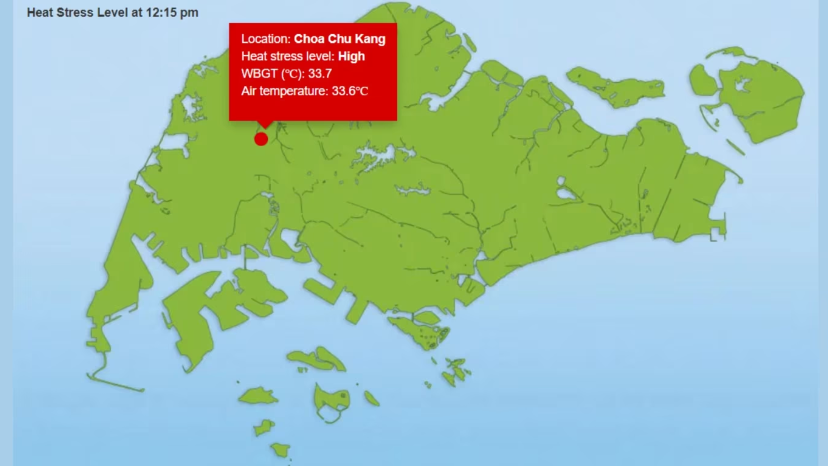
The second was Kallang Practice Track at 1pm, when the WBGT measured 33.0°C.
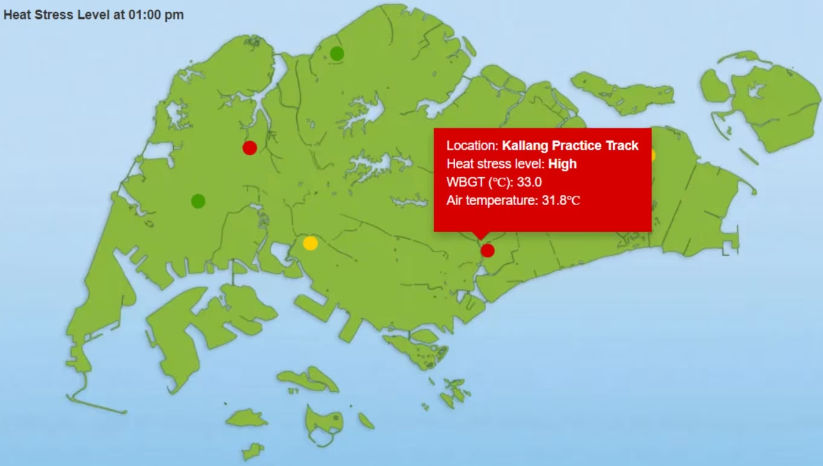
Heat stress occurs when our body is unable to cool itself sufficiently. It can lead to heat exhaustion and heat stroke.
People who are more vulnerable to heat stress should exercise more caution when levels hit "high". They include:
- The elderly
- Children and infants
- People who are ill, have recently recovered, or have chronic conditions
- Pregnant women
- People who recently travelled from cooler climates
For the general population, the following heat stress advisory is useful if you need to take part in prolonged outdoor activities:
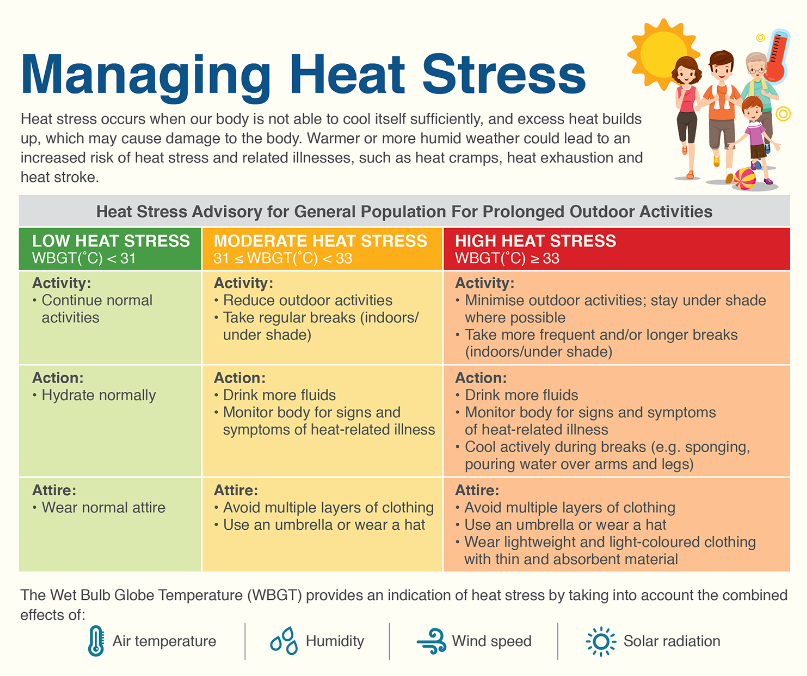
Cover image credit: Canva.
If you like what you read, follow us on Facebook, Instagram, Twitter and Telegram to get the latest updates.

